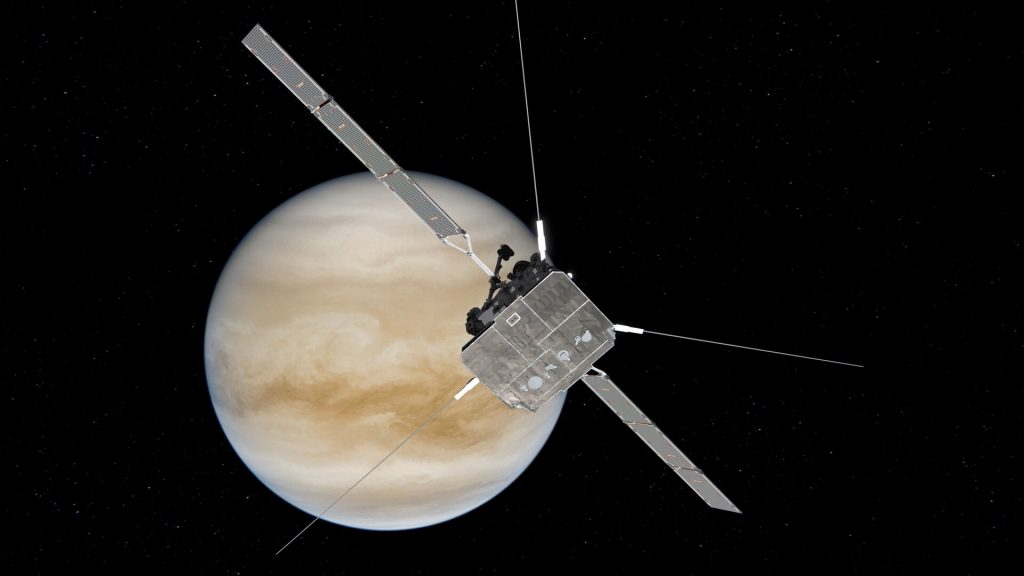On Aug. 9, 2021, ESA/NASA’s Solar Orbiter spacecraft passed within 4,967 miles (7,995 kilometers) of the surface of Venus. During this heroic flyby, the Solar Orbiter Heliospheric Imager, or SoloHI, telescope captured this gleaming view of the sunlit planet.
The scene shows Venus looming from the left while the Sun is off-camera to the upper right. The planet’s nightside, the part hidden from the Sun, appears as a dark semicircle surrounded by a bright crescent of light – glare from Venus’ incredibly bright side.
Two bright stars were also visible in the background before getting completely eclipsed by the bright planet. Both these stars are parts of the Taurus constellation.
“Ideally, we would have been able to resolve some features on the nightside of the planet, but there was just too much signal from the dayside,” said Phillip Hess, an astrophysicist at the Naval Research Laboratory in Washington, D.C.
“Only a sliver of the dayside appears in the images, but it reflects enough sunlight to cause the bright crescent and the diffracted rays that seem to come from the surface,” he added.
It is known to be Solar Orbiter’s second Venus flyby. After that, it plans to make another Earth flyby and six more flybys of Venus between 2022 and 2030. The spacecraft uses Venus’ gravity to draw it closer to the Sun and tilt its orbit, swaying it up and out to “look down” on the Sun. This way, Solar Orbiter will eventually capture the first images of the Sun’s north and south poles.
Earlier this week, ESA and the Japan Aerospace Exploration Agency’s BepiColombo mission also flew by Venus. Clips shared by the ESA shows the small spacecraft spinning past Venus on its way to Mercury.
It’s pretty cool how we got to see two unusual glimpses of a distant world in a single week.

